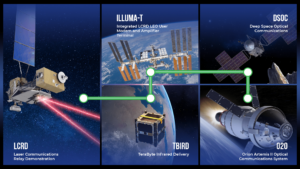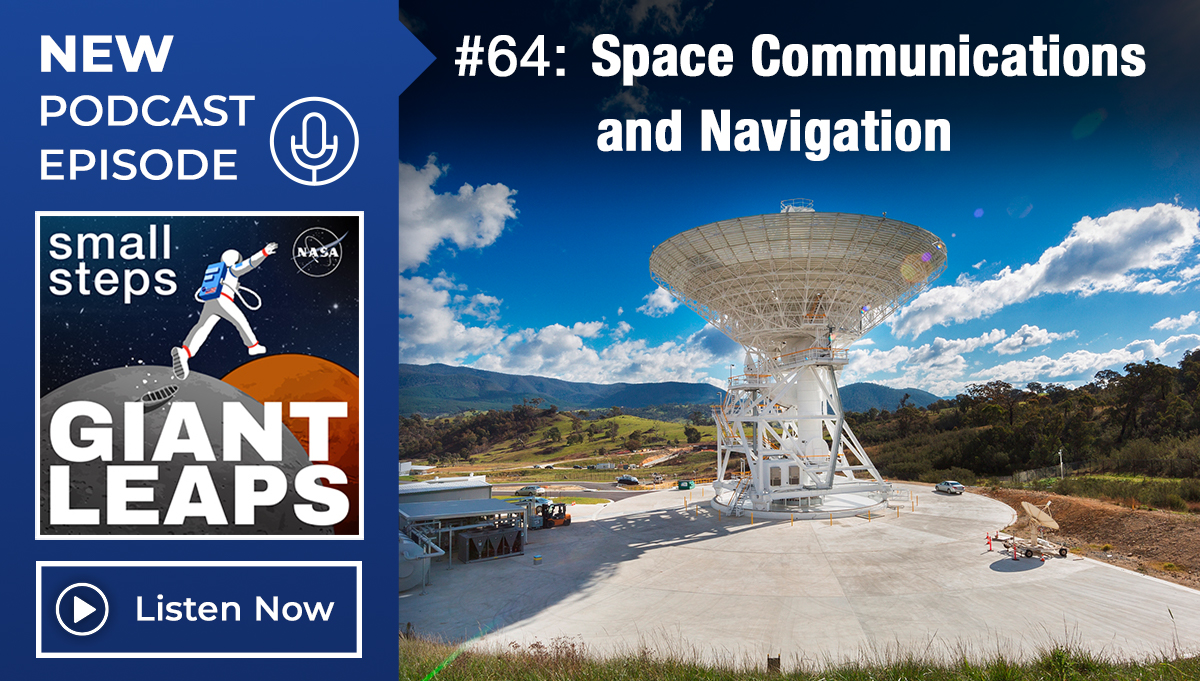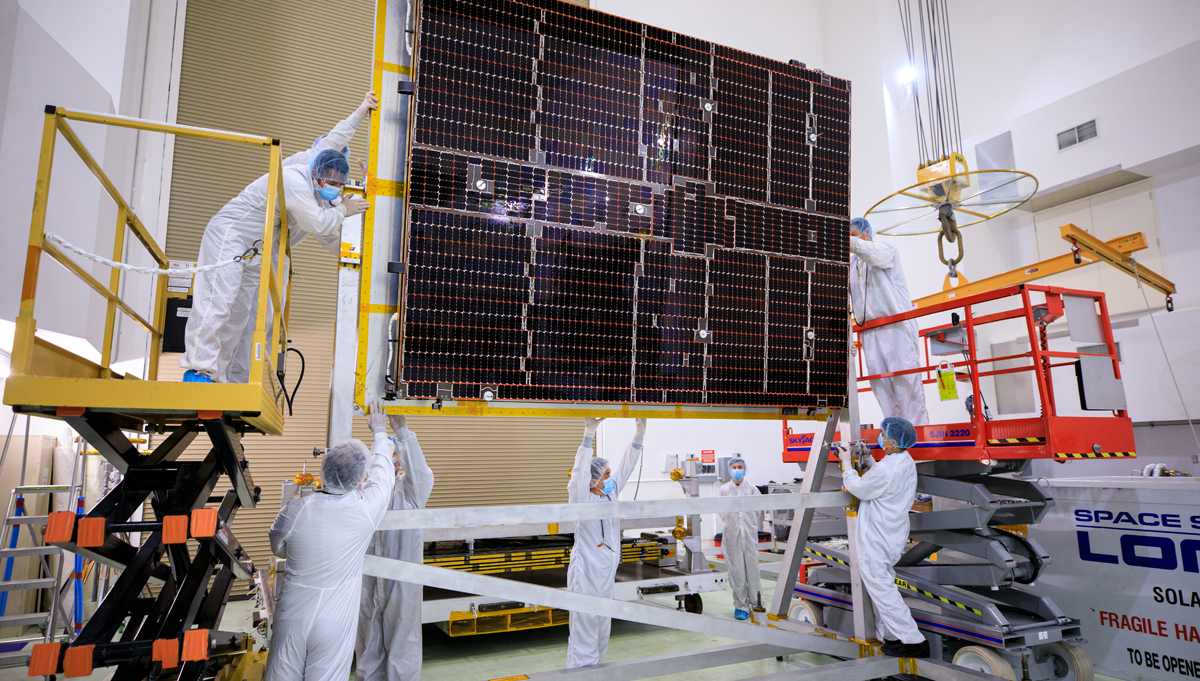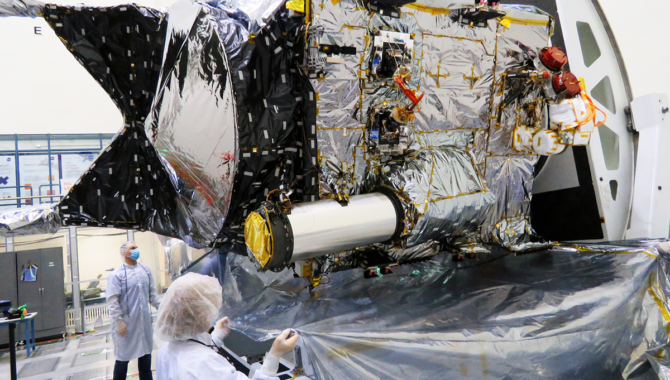
The Deep Space Optical Communications demonstration flight transceiver can be identified by its large tube-like sunshade on the Psyche spacecraft, shown here inside a clean room at NASA’s Jet Propulsion Laboratory.
Photo Credits: NASA/JPL-Caltech
DSOC demonstration will ride aboard Psyche spacecraft.
In the fall of 2029, a spacecraft that will be orbiting a curious metallic asteroid far beyond Mars will direct near-infrared laser signals across vast distances to a specialized optical receiver at an observatory in Southern California. It won’t be NASA’s first test of optical communications, but it will be by far the most ambitious. The Deep Space Optical Communications (DSOC) system is characterized as a ride along demonstration aboard the Psyche spacecraft.
For decades, NASA has relied primarily on radio waves for communications. Much of what humans know about space has been transmitted to Earth that way. On July 21, 1969, when about one fifth of the world’s population watched Neil A. Armstrong descend a ladder and step onto the surface of the Moon, those images arrived via radio waves. On July 14, 1965, when humanity saw the first images of the vast, barren surface of Mars, those images arrived via radio waves. Today, the dazzling images from the Hubble Space Telescope and the James Webb Space Telescope arrive via radio waves.
“For 60 plus years we’ve been building bigger, more complex radio wave antennas on the Earth and in space to allow that communication so that you could see beautiful images from [the Hubble Space Telescope] or hear the astronauts talking from the [International Space Station] back to Earth, or all kinds of applications,” said Jeff Volosin, Acting Deputy Associate Administrator and Program Manager for Space Communications and Navigation, Space Operations Mission Directorate, NASA Headquarters, speaking at a NASA press conference.
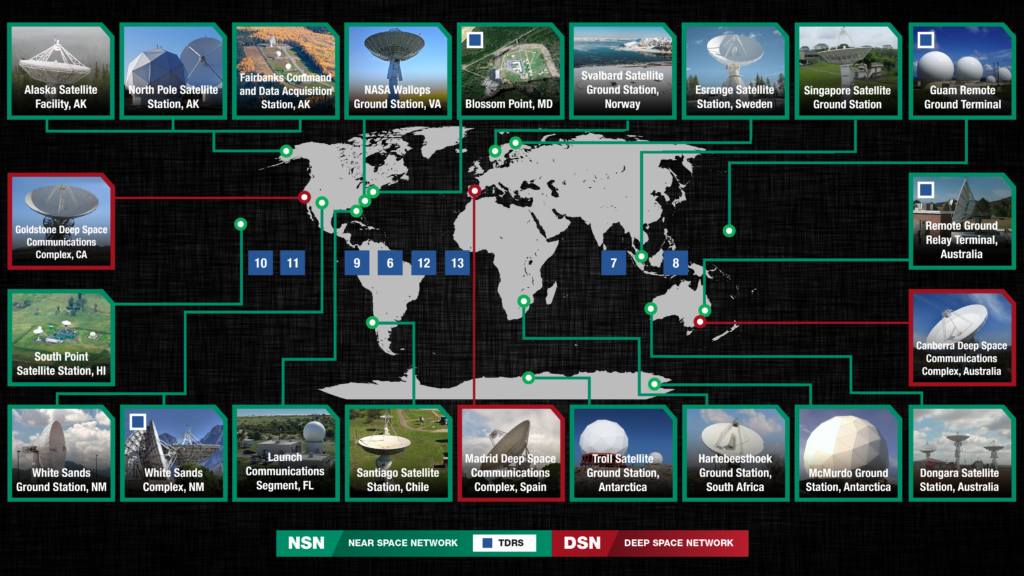
Current Space Communications and Navigation (SCaN) ground stations. TDRS stands for Tracking and Data Relay Satellite.
Graphic Credit: NASA
“But as we’ve been evolving radio communications over the years, you’ll notice that … the antennas we need are getting bigger and bigger. If you’ve ever seen pictures of the 70-meter diameter antennas that we have spread throughout the world to communicate with probes out into deep space, radio waves do have limitations,” Volosin added.
As NASA prepares to establish a long-term human presence at the Moon with the Artemis program to learn the lessons that will inform an eventual human mission to Mars, optical communications promise to provide dramatically increased bandwidth. “…We’re looking to increase the speed at which we can get data down to Earth, and we’re looking to increase the amount of data we can get down to Earth. And that has a lot of advantages for us,” Volosin said.
For instance, optical communications could support Artemis astronauts transmitting high-definition imagery in real time from the surface of the Moon. It could better bridge the vast distances to astronauts on the surface of Mars in the future. And, in contrast to radio wave communications, optical systems require smaller infrastructure on Earth and in space. “That’s easier on the spacecraft designers. It’s also easier for us on the investment side on the Earth to be able to build smaller terminals that are more capable than any of the radio antennas that we have today,” Volosin said.
NASA is currently testing optical communications in geosynchronous orbit. The Laser Communications Relay Demonstration (LCRD) was launched on December 7, 2021, on a two-year primary mission to demonstrate the potential of bi-directional optical communications transmitting data space-to-space, space-to-ground, and ground-to-space at rates up to 1.2 gigabits per second. The LCRD payload is hosted onboard the U.S. Department of Defense’s Space Test Program Satellite 6. NASA is preparing to launch the Integrated LCRD Low Earth Orbit User Modem and Amplifier Terminal (ILLUMA-T) to the International Space Station, where it will send data to LCRD, which will then relay the data to Earth.
The DSOC system comprises a flight transceiver aboard the Psyche spacecraft, an uplink laser transmitter that sends a reference beam into space from the Table Mountain Observatory in Big Pines, California, and a downlink optical receiver at the Hale Telescope, a 5-meter (16.6 feet) diameter reflecting telescope at the Palomar Observatory in San Diego County, California.
“The five-meter telescope provides us with a large enough area so that we can collect as many photons as possible. Photons are the quanta of light that arrive at the Earth from our flight laser over these long distances,” explained Meera Srinivasan, DSOC Ground System Product Delivery Manager and Operations Lead, NASA Jet Propulsion Laboratory (JPL). “By the time it gets down to Earth, these are very weak signals. We need to collect as many of these [photons] as possible.”
“Information is conveyed in the precise arrival times of these photons,” Srinivasan added. “What we have installed there is a superconducting nanowire detector array. This is fabricated here at JPL. It operates at cryogenic temperatures that allow it to count these individual photons with very high efficiency.”
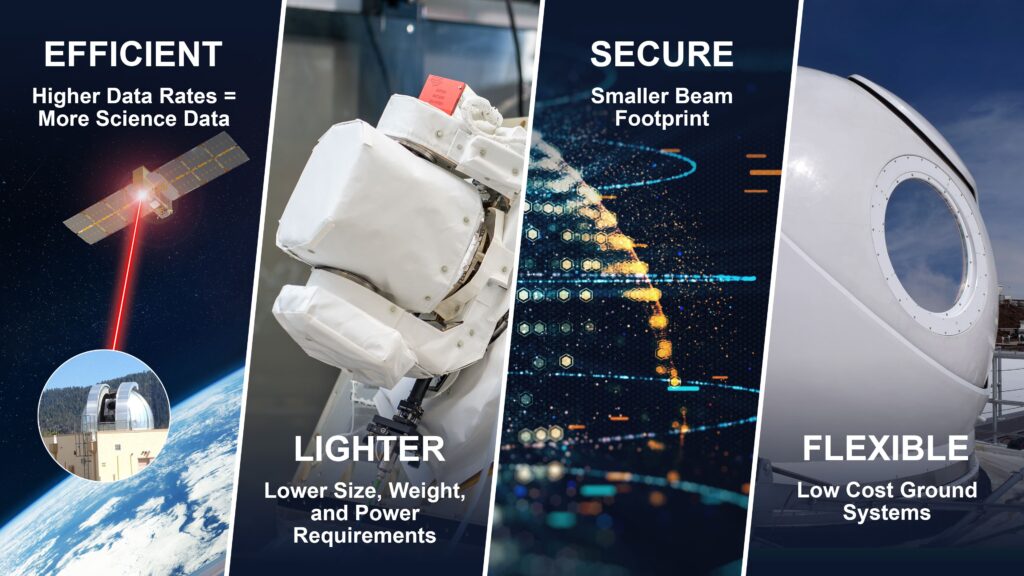
The benefits of laser communications: more efficient, lighter systems, increased security, and more flexible ground systems.
Graphic Credits: NASA/Dave Ryan
As a technology demonstration, DSOC will not send Psyche data back to Earth, but rather test the optical communications system in various ways, under different conditions.
“What are the key challenges for doing this from the distances that we’re talking about? We have to point a narrow laser beam from deep space back to an Earth receiving station covering a distance of about 200 million miles,” said Abi Biswas, Project Technologist for DSOC, speaking at the NASA press conference. “If you’re off by let’s say some thousandth of a degree…, then your beam footprint is somewhere over the Pacific Ocean and the ground receiver at San Diego County is seeing nothing.”
With the huge potential of optical communications, DSOC and other technology demonstrations closer to Earth will provide valuable insights into what an operational optical communications system will look like and how it can be applied to future missions. Already the LCRD team has gathered valuable data about the impacts of weather on signal availability and how more ground stations can offset those impacts.
“We’re excited about this opportunity because it’s really going to open up the outer solar system to bring you back lots more imagery and lots more data as we learn more about how to communicate [in] deep space with optical,” Volosin said.






